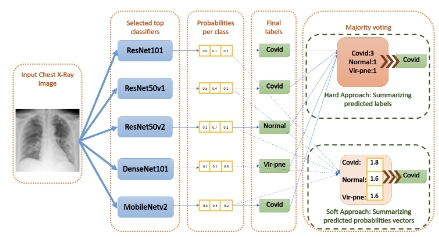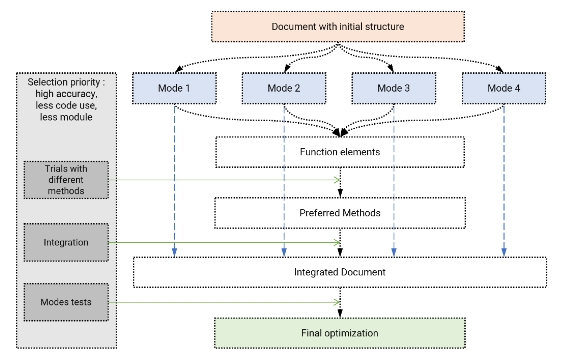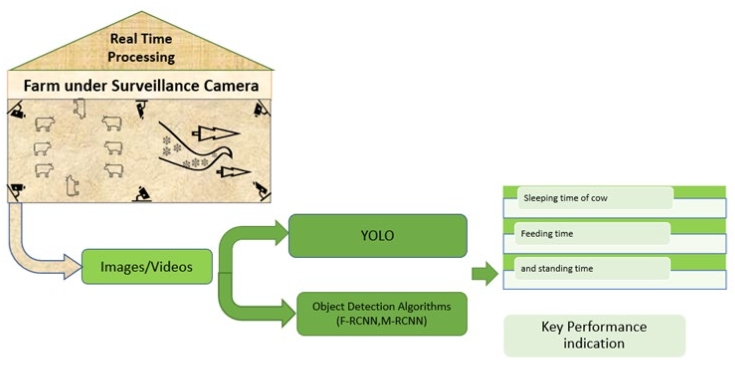Design and implementation of an intelligent waste classification device
Abstract
This study presents a guideline for an intelligent waste classification device developed using a Raspberry Pi, a camera, and Google’s Teachable Machine (TM) for image recognition. The device is designed to identify waste and classify it into recyclable and non-recyclable categories to improve recycling efficiency. The system is primarily controlled by the Raspberry Pi, with the camera capturing images, which are then processed by TM for image model training to facilitate waste classification. This paper describes the hardware and software components as well as their applications and verifies the effectiveness of the device in practical use. The device is cost-effective, offers good scalability, and is practical for waste classification in households, offices, and public spaces. This study provides valuable insights for the design and future applications of intelligent waste classification systems.
References
[1]Huang WL, Lin DH, Chang NB, et al. Recycling of Construction and Demolition Waste Via a Mechanical Classification Process. Resources, Conservation and Recycling. 2002; 37: 23–37.
[2]Rahman MO, Hussain A, Basri H. A Critical Review on Waste Paper Classification Techniques. International Journal of Environmental Science and Technology. 2014; 11: 551–564.
[3]Sathish PG, Subrata H, Atul T. A Review on Automated Classification of Source-separated Municipal Solid Waste for Recycling. Waste management. 2017; 60: 56–74.
[4]Zakianis S, Djaja IM. The Importance of Waste Management Knowledge to Encourage Household Waste-Classification Behaviour in Indonesia. International Journal of Waste Resources. 2017; 7: 1–4.
[5]Muhammad AI. Modeling of Risk for Improper Classification of Waste at Recycling Centers. Waste management. 2020; 102: 550–560.
[6]Lange JP, Managing Plastic Waste Classification, Recycling, Disposal, and Product Redesign. ACS Sustainable Chemistry & Engineering. 2021; 9: 15722–15738.
[7]Zhao Y, Zhang J. Literature Mapping of Waste Classification and Recycling Behavior Research: a Visual Analysis Using CiteSpace. Environmental Science and Pollution Research. 2023; 30: 67953–67973.
[8]Anushka GS, Sunidhi K, Chinmay A, et al. A State-of-the-art Review on Robotics in Waste Classification: Scope and Challenges. International Journal on Interactive Design and Manufacturing. 2023; 17: 2789–2806.
[9]Annegrete B, Bente H, Karine N. Households’ Recycling Efforts. Resources, Conservation and Recycling. 2002; 36: 337–354.
[10]Biswajit R, Vivek P, Priyajit J, et al. Classification of Plastic Waste for Effective Recycling. International Journal of Applied Sciences and Engineering Research. 2015; 4: 564–571.
[11]Feng Z, Yang J, Chen L, et al. An Intelligent Waste-Classification and Recycling Device Based on Improved EfficientNet. International Journal of Environmental Research and Public Health. 2022; 19: 1–18.
[12]Adedeji O, Wang Z. Intelligent Waste Classification System Using Deep Learning Convolutional Neural Network. Procedia Manufacturing. 2019; 35: 607–612.
[13]Kang Z, Yang J, Li G, et al. An Automatic Garbage Classification System Based on Deep Learning. IEEE Access. 2020; 8: 140019–140029.
[14]Azhaguramyaa VR, Janet J, Narayanan V, et al. An Intelligent System for Waste Materials Segregation Using IoT and Deep Learning. Journal of Physics: Conference Series. 2021; 1916: 12268.
[15]Zhang Q, Zhang X, Mu X, et al. Recyclable Waste Image Recognition Based on Deep Learning. Resources, Conservation and Recycling. 2021; 171: 1–10.
[16]Wang C, Qin J, Qu C, et al. A Smart Municipal Waste Management System Based on Deep-Learning and Internet of Things. Waste Management. 2021; 135: 20–29.
[17]Maria K, Fredy R, George P, et al. Robotic Waste Classification Technology: Toward a Vision-Based Categorization System for the Industrial Robotic Separation of Recyclable Waste. IEEE Robotics & Automation Magazine. 2021; 28: 50–60.
[18]Siddharth B, Ashwini K, Kumar K, et al. Self-adaptive Waste Management System: Utilizing Convolutional Neural Networks for Real-Time Classification. Engineering Proceedings. 2024; 62: 1–9.
[19]Uppugunduru AK, Renuka B, Kiranmai G, et al. Automatic Waste Segregator Using Raspberry Pi. International Journal of Advanced Technology in Engineering and Science. 2017; 5: 284–289.
[20]Gaurav P, Abhishek P, Ganesh J, et al. Raspberry Pi Based Automated Waste Segregation System. International Research Journal of Engineering and Technology. 2018; 5: 29–32.
[21]Akalya K, Bavithra DM, Jeevananth S, et al. Automatic Trash Segregator Using Raspberry Pi. International Journal of Advanced Research in Electrical, Electronics and Instrumentation Engineering. 2020; 9: 2167–2170.
[22]Thien KT, Kha TH, Dac NL, et al. A Deep Trash Classification Model on Raspberry Pi 4. Intelligent Automation & Soft Computing. 2023; 35: 2479–2491.
[23]Sree GNSK, Sri CK, Namani DR. Smart Garbage Monitoring System Leveraging Raspberry Pi Technology. Nano World Review Article Journal. 2023; 9: 518–523.
[24]Om T, Pratik B, Sahil RP, et al. A Survey on Automated Waste Segregation System Using Raspberry Pi and Image Processing. International Research Journal of Engineering and Technology. 2023; 10: 38–43.
[25]Sinduja B, Tarun K. An Intelligent App-based System for Waste Segregation and Collection. Procedia Computer Science. 2024; 235: 2843–2856.
[26]Yu GL, Junxian W, Yang M, et al. Automated Classification of “Cluttered” Construction Housekeeping Images Through Supervised and Self-supervised Feature Representation Learning. Automation in Construction. 2023; 156: 105095.
[27]Janusz B, Mariusz K. Deep Learning for Plastic Waste Classification System. Applied Computational Intelligence and Soft Computing. 2021; 1–7.
[28]Peter D, Fayeem A, Mohammad T, et al. The Classification of Construction Waste Material Using a Deep Convolutional Neural Network. Automation in Construction. 2021; 122: 103481.
[29]Mahir K, Samet U, Yasemin CK, et al. Optimization of Several Deep CNN Models for Waste Classification. Sakarya University Journal of Computer and Information Sciences. 2023; 6: 91–104.
Copyright (c) 2025 Author(s)

This work is licensed under a Creative Commons Attribution 4.0 International License.










